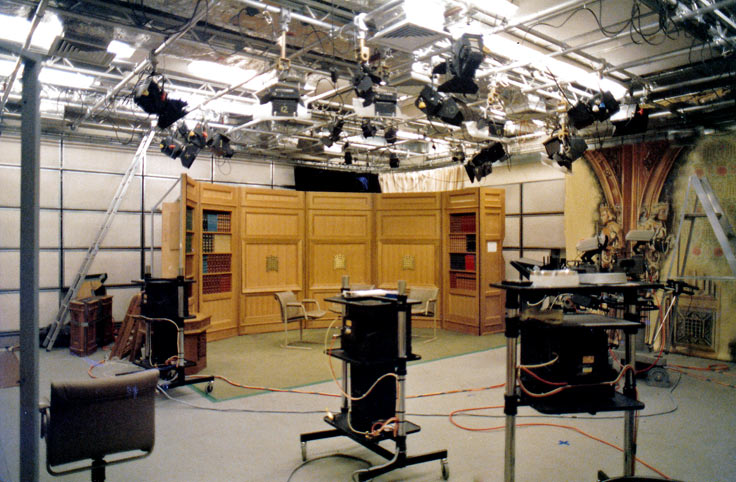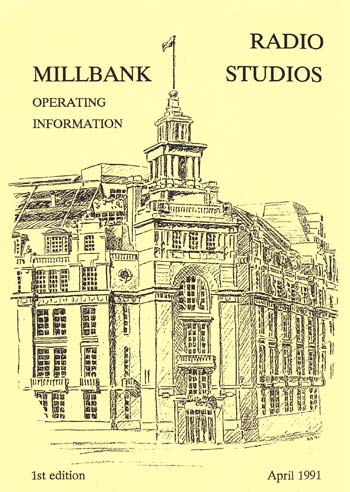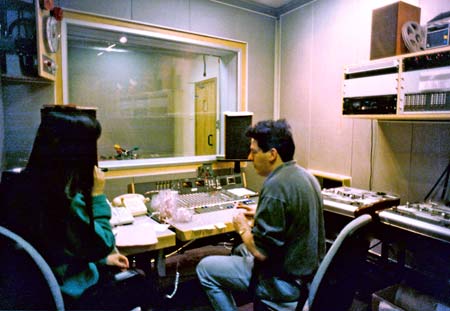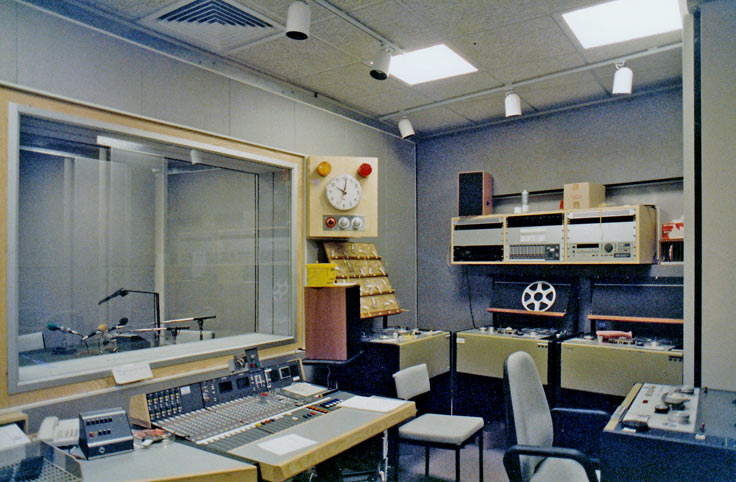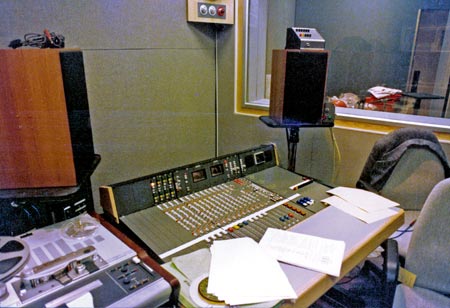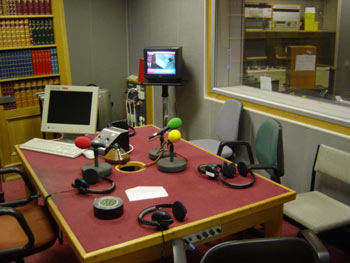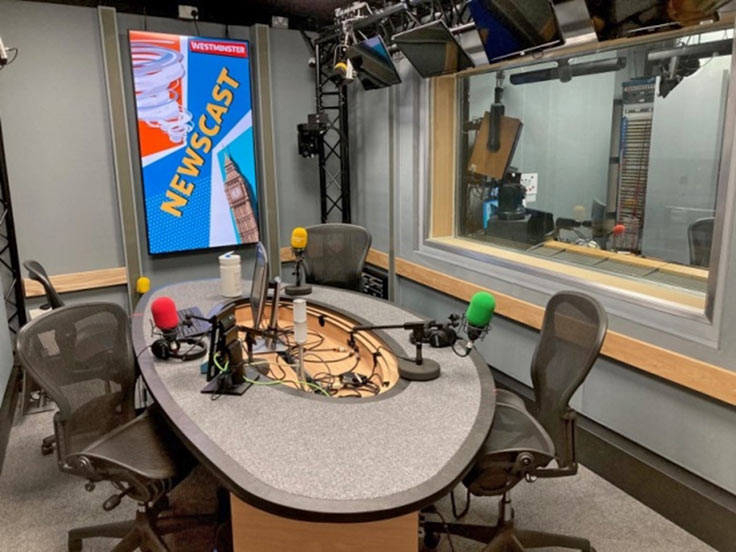Broadcasting Parliament - Thirty Years of Millbank -
1991-2021
The BBC's new facilities at 4 Millbank were officially opened
on April 16th 1991 by the Speaker of the House of Commons, Bernard Weatherill.
That week's Ariel carried a photo of Mr Speaker with his wife, as well as
chairman of the Board of Governors Marmaduke Hussey, vice chairman Lord Barnett,
DG Michael Checkland and head of news Tony Hall.
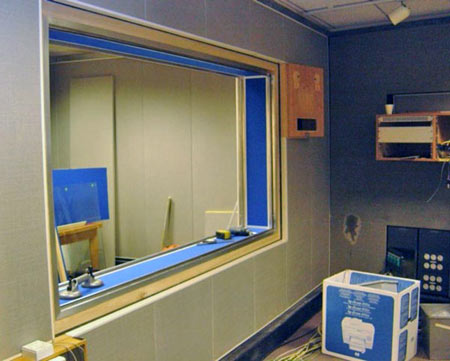
Also present but not mentioned in the article(!) was our esteemed host Roger
Beckwith, who recalls the early days: 'My first visits to the building involved
climbing the builders' stairs and going in through a window. The whole space
was completely open, none of the internal structures were in place. Later
visits saw the walls of the studios built and equipment installed. During
the Easter recess of 1991 tape machines and other portable items were moved
from Bridge Street. The desks were tested and final bugs fixed. Many of the
studio managers who would be using the studios came for training. All making
for a frantic fortnight to get everything ready for opening day.'
When Margaret Thatcher officially opened the building in July of that year,
senior management was not invited so Mrs T was escorted by Westminster head
of programmes Bob Egginton and head of engineering Gordon Lean.
The building would be shared with other broadcasters: ITN, BskyB and TV-am.
Ariel described the BBC's facilities as follows: 'three radio studios, a 1000
square foot TV studio, one multi-media area (a studio to be shared by TV and
radio) and two newsrooms.'
This would enable correspondents from John Cole to those in local radio to
share their information and expertise. Which got me thinking - how many Speakers,
Prime Ministers and BBC Political Editors have we seen in these 30 years?
Answers below!
By this time the first Iraq war had just come to an end, and 'Scud FM' with
it, so there was no radio rolling news service. The studios would support
correspondents filing to traffic for summaries and bulletins or doing two
ways into the sequence programmes, and full programmes like Today and Yesterday
in Parliament. Desks were Calrec Compacts and a 30-page guide was produced
by Roger with his lovely drawing of the building on the front page.
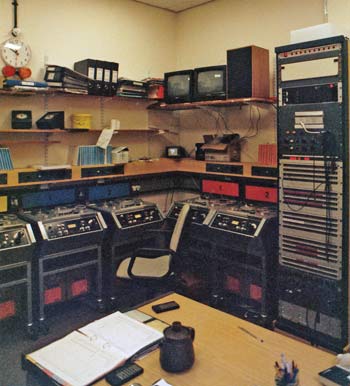
In the days before digital editing, Parliamentary proceedings were recorded
onto quarter inch tape in Radio Record, clips were identified by production
and mostly dubbed off the master by SMs, a process which was closely modelled
on Bridge Street Intake.
A photo of MBR3 in the early days shows a young John Machin preparing a day's
supply of 'reds' - 5" spools with a length of red trailer tape ready for short
recordings to be stored.
The tape rack in Roger's photo of MBR1,
below, is full of short clips,
typical of Today in Parliament, which was broadcast live in those days, as
Parliament itself was regularly still sitting when the programme went on air.
The speaker above the tape machines played B leg only which carried seedless
TIM (time signal, no pips) to help locate actuality. Note also the sharps
box and tape head cleaner (aerosol on top of the tape control panel).
A photo taken during installation shows a notable feature of MBR2 was that
space dictated that the desk was side-on to the presenter - quite uncomfortable
if you were waiting for a hand signal. It was set up like this when a bright
young journalist called Boris Johnson was on the Week in Westminster presenting
rota.
Perhaps the first major change in technology was the introduction of digital
record and replay in the form of D-CART, and Millbank was one of the first
places to carry out trials. It allowed clips to be cut by multiple users from
one central recording - a clear boost to efficiency not always matched by
quality, and a development not universally welcome among
SMs or newsroom staff. The system also had its reliability issues, so even
by the late 90s, you would always dub clips for live programmes onto tape
or minidisc so you had a back-up in case of failure.
Other changes in the 90s included the launch of Radio 5 Live as a rolling
news and sport network, the replacement of the basys news production system
with ENPS, and significantly, Tony Blair's reform of Commons sitting hours,
moving Prime Minister's Questions to lunchtime on Wednesdays and introducing
earlier starts and finishes. Journalists replaced announcers on Today in Parliament,
and stories were packaged instead of a string of individual clips. The earlier
sitting times eventually allowed the programme to be recorded and delivered
to continuity, first by taxi or bus, and file transfer when it came along.
Elsewhere, the improved radio car fleet and the introduction of ISDN and early
satellite technology allowed programmes to put their presenters at the heart
of the story and co-present from location. When John Major announced he was
taking on the Eurosceptic fringe of his party and called a leadership election
in June 1995, World at One was one of the programmes to be presented from
College Green, and producers started to look at Millbank as a base for programmes.
The studios hadn't been designed for such complex productions, redundant tape
machines were taking up a lot of space and desks were starting to show their
age, so money was found for a refurbishment. Tape machines were removed, allowing
the cubicle and studio in MBR2 to be switched around, so the desk now faces
the right way but the cubicle is still rather cramped.
On one occasion, coverage of an Autumn Statement featured in a behind the
scenes package on TV, and this grab shows your author (from his best side)
looking after WATO with editor Nick Sutton.
The 'test run' for the new MBR1 was the 2003 PM Budget special. In the photo
Barry Cobden is on the panel and Nick Hartree has been drafted in to play
D-CART inserts, although since then virtually all the work at Millbank has
been on a single operator basis. The desk is a Calrec C2 with 24 channels
including six mics and six outside sources. We took advantage of the extra
space created by moving out the tape machines to create a larger production
desk with positions for a producer and editor. But there was and remains only
one set of talkback keys to share between them all.
When The Westminster Hour launched on Radio 4, the last 15 minutes consisted
of a stand-alone feature. A group of producers at Millbank formed a unit to
propose ideas for these slots, and the long form team is now an established
part of the Millbank set-up, producing one-off documentaries and series on
a wide range of political and less political subjects. Their programmes have
been mixed and edited first on Cool Edit, then VCS Startrack and more recently
SADIE, as seen in this recent photo of MBR3 (which has changed a lot since
Machin first walked through the door).
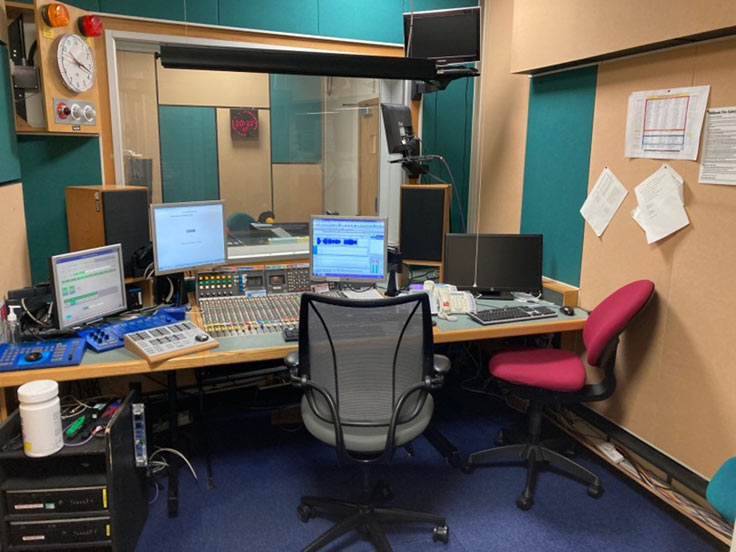
Interest in politics ebbs and flows over the years. When the Conservative/Lib
Dem coalition established the Fixed Term Parliament Act in 2011, many thought
the excitement had gone from Westminster, but this proved to be a short lived
view. In the last six years we have seen three general elections and as many
Prime Ministers, a referendum which spilt the country, years of Brexit debate
leading to regular demonstrations in the streets outside, followed by more
than a year of pandemic which emptied those streets altogether.
During the 2017 General Election campaign, Radio 5 Live launched a podcast
called Electioncast, designed to give correspondents more time to discuss
the issues behind the day's news. When that election left a Government
without a sufficient majority to deliver the result of the 2016 referendum,
the feature was renamed Brexitcast, presented by Adam Fleming, Chris Mason,
Katya Adler and Laura Kuenssberg. It developed into a big success, winning
awards and becoming so popular that when the This Week TV programme came to
an end, Brexitcast was promoted to BBC1. To preserve the atmosphere which
was behind the success, it was decided not to move to a TV studio but to put
TV cameras and a mini gallery in MBR1. The photo,
right, shows Studio
1
c.2003, and,
below, in 2021.
So the studio and cubicle today look a lot different from 30 years ago. You
will notice lots more screens and the mini vision gallery in the editor position.
Speakers are hung from the ceiling to create more room. The unit on the left
contains a standalone ISDN codec in case our exchange fails, and a rarely
used FX unit for echo etc. The walls have returned to grey though we have
additional lighting to add colour.
The view from the other end of the cubicle shows a BNCS terminal for switching
outside sources and dialling ISDNs, the VCS dira playout terminal so we can
see and tweak playlists, and the VCS controller. And underneath it all the
Calrec C2 desk which was installed in 2003.
Thank you to all the SMs who have worked at Millbank in the past 30 years
and good luck to those who will follow. Finally back to my earlier question:
since 1991 there have been five Speakers of the House of Commons, and also
five Political Editors of the BBC. On average, Prime Ministers do not last
quite as long, but it's a close run thing.
Speakers: Bernard Weatherill, Betty Boothroyd, Michael Martin, John Bercow,
Sir Lindsay Hoyle.
Prime Ministers: John Major, Tony Blair, Gordon Brown, David Cameron, Theresa
May, Boris Johnson.
BBC Political Editors: John Cole, Robin Oakley, Andrew Marr, Nick Robinson,
Laura Kuenssberg.


